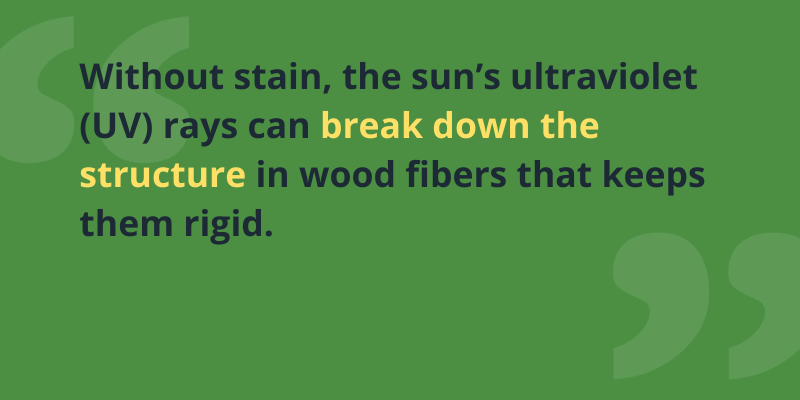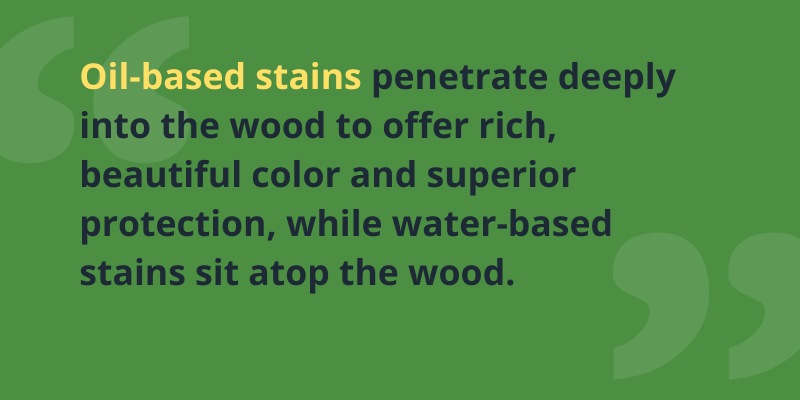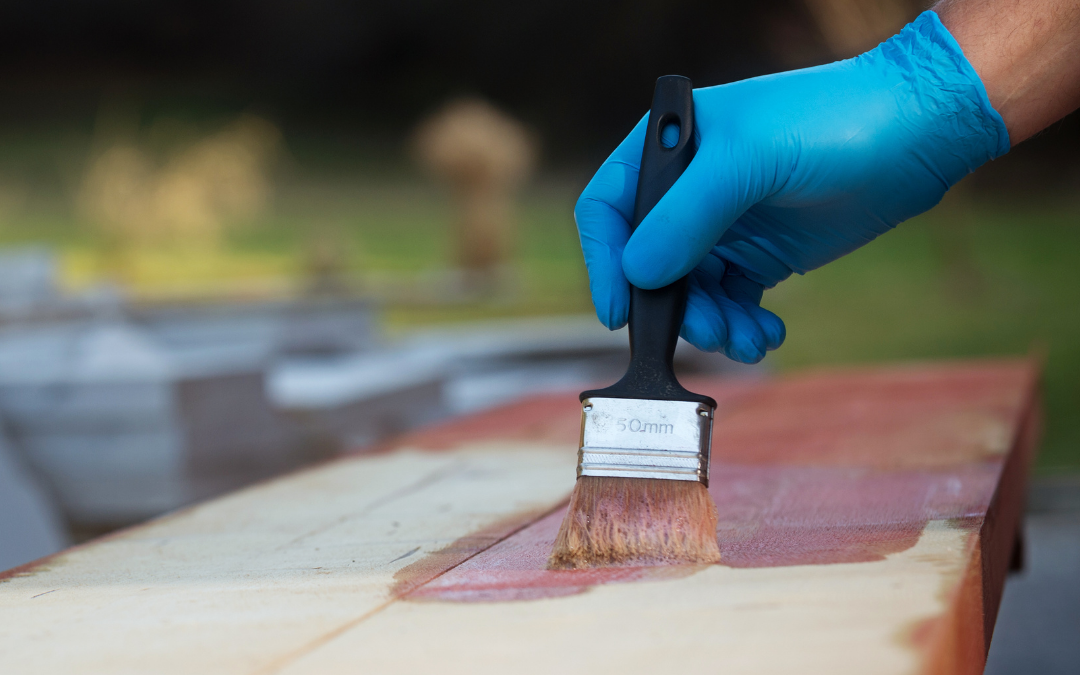After a long winter, your outdoor wood features could probably use a little attention. Cleaning and refreshing the finish on your pergola, deck, and fence should top your spring to-do list because, with proper maintenance, you can keep your wood beautiful for decades.
If you ignore your wood, it can begin to decay, but don’t worry! It’s easy to safeguard your beautiful features with stain.
Which stain should you choose? There are many types on the market, but in this article, we’ll explain why we prefer oil-based stains.
Do I really need a stain?
Stain is beautiful, but it isn’t just for looks! Without stain, the sun’s ultraviolet (UV) rays can break down the structure in wood fibers that keeps them rigid. Over time, the wood color will fade and begin to resist protective finishes. Then, water can get into the wood, and it can start to rot.

Stains help protect the surface of your wood by blocking the damaging UV rays, much like sunscreen protects your skin. They also keep water out of the wood so that it won’t swell or rot. As an added benefit, they also bring out the beautiful, natural texture of the wood.
What makes up a stain?
Four basic ingredients make up an oil-based stain:
- Resin/oils – these carry the pigments and additives into the fibers of the wood and then shield them from any water.
- Pigments – these add color to the wood and guard it from the sun’s UV rays.
- Additives – these make the stain easier to apply and improve the finish performance.
- Solvents – these thin the resin/oils so that they can easily penetrate into the wood.
The pros of an oil-based stain
Oil-based stains are the protectant of choice here at Green Okie. So, what sets an oil-based stain apart from a water-based one, and why do we choose to use them?
An even finish
Oil-based stains take more time to dry than water-based, but this makes it easier to get a more even finish on the wood. The slow drying also allows you to wipe off any excess stain for the best possible result.
Deeper penetration into the wood
Oil-based stains penetrate deeply into the wood to offer rich, beautiful color and superior protection, while water-based stains sit atop the wood. Over time, water-based stains will flake and peel, so you need to sand the wood before applying a fresh coat. Oil-based stains will not peel, so prepping the wood for a fresh coat is much quicker and easier.

Extreme durability
If you prefer a stain that lasts for several years with zero maintenance, then oil-based stains are for you. Not only are they easier to refresh than water-based, but you need only reapply them every three to five years, rather than every spring.
The cons of a water-based stain
In our opinion, water-based stains do not compare to oil-based stains for a variety of reasons. First, the water in the formulas can absorb into the wood and make it swell. When it dries, the wood will have an undesirable, rough texture.
Also, water-based stains don’t sink into the wood like oil-based stains, which means that you’re not getting the best possible protection for your wood. Instead, the water-based stain sits on top of the wood and will eventually flake off, leaving your wood with a grey patina. When you want to apply a new layer each spring, you’ll have to grind off the peeling stain, which is a lot of work.

Get superior wood protection
Oil-based stains offer superior protection for your wood, coupled with a richer, deeper color than water-based. If you’re interested in learning more about our oil-based stains or seeing our shade range, get in touch with us today!



Recent Comments